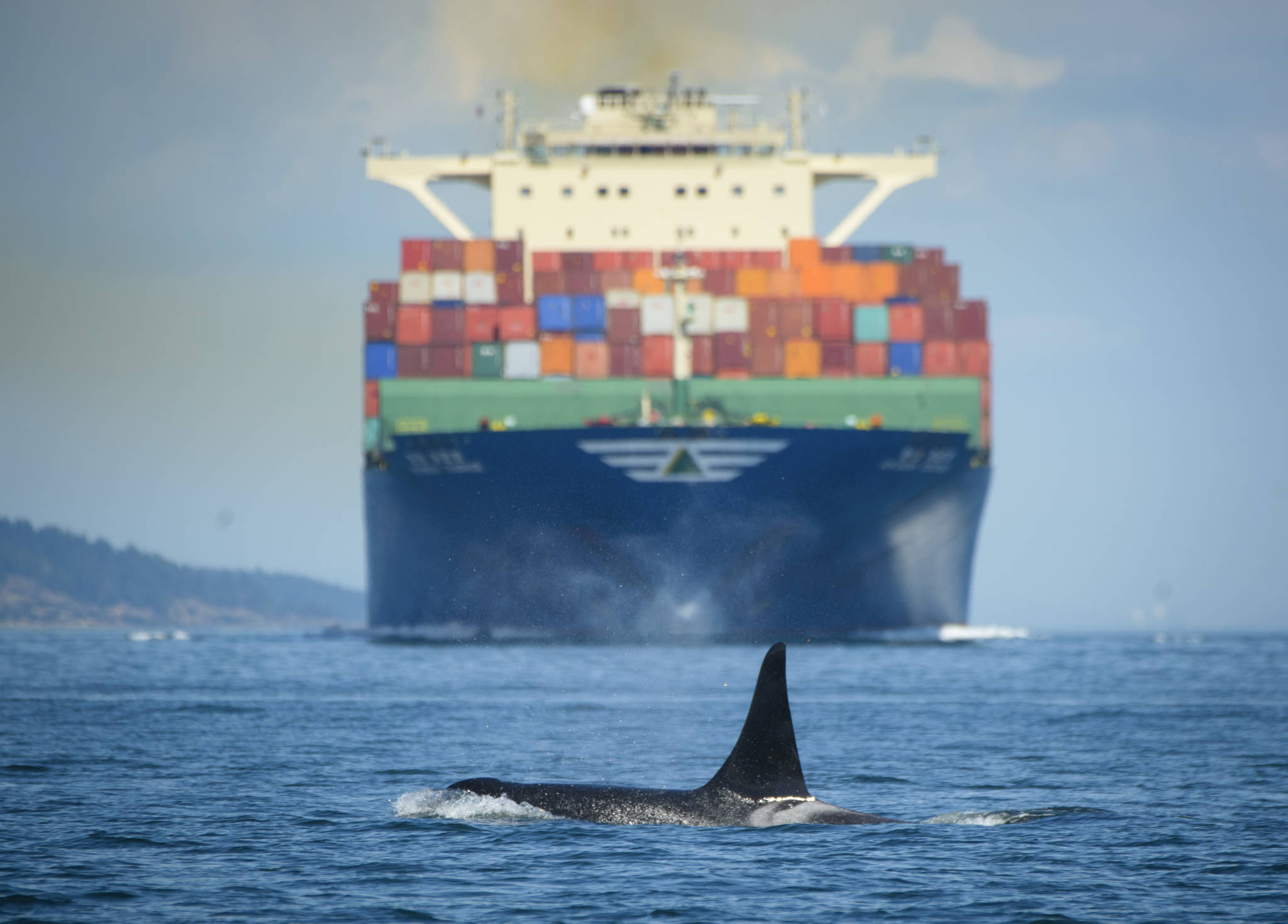Oceans were once so acoustically crystal clear that the low rumble of the great blue whale could be heard for hundreds of miles. Today, long after the rise of steam ships and the industrial revolution, the Earth’s seas have become increasingly louder.
“Today, 95 percent of global commerce is through shipping,” Christopher Clark told a packed audience at Brickworks in Friday Harbor, March 31 during his talk “Seeing Sound.”
Clark is a bioacoustic engineer, meaning he studies biology and acoustics, particularly in whales.
The event was sponsored by Orca Relief, a nonprofit organization that along with the Center for Biodiversity, and Project Sea Wolf, has filed a petition for an Orca Protection zone along the west side of San Juan Island. To learn more about the petition, read “Public comment open in petition to protect killer whales from noise” in the Journal’s Jan. 25 issue, visit orcarelief.org, or NOAA westcoast.fisheries.noaa.gov/stories/2017/11_01122017_srkw_protection_zone_petition.html.
“You can’t listen to the ocean for any length of time without encountering human noise,” Clark said.
After researching in the field, he thought his equipment was broken on several occasions because he couldn’t hear anything, then realized ambient noise from ships was interfering. What was eerie was that he could hear their rumble, but the ships were so far away they might as well have been invisible. Clark sees this noise pollution as a critical issue. North Atlantic right whales, like the Southern resident Orcas, are endangered, and he suspects noise is a contributing factor for both species. It took some time to make his case to fellow right whale researchers.
“If my colleagues, who agree with me on many of these issues, did not understand, I knew I had a real problem,” Clark said.
To communicate that vessel traffic noise was negatively impacting cetaceans, he and his colleague Dimitri Ponirakis, created an animated computer program that illustrated visually sound footprints from different types of boats as they traveled through the right whale’s habitat. The result was stunning. Data showed the whales lost 65 percent of their opportunity to communicate with each other due to boat noise. In other words, due to boats, the whales suffer a 65 percent loss in mating and feeding opportunity, as well as basic social interactions.
“Marine mammals are highly dependent on sound,” Clark said, adding that fish, shrimp, even invertebrates are also acoustic creatures. He went on to play the low clang of the blue whale, rapid fire minke calls, and the haunting song of the humpback. Clark also played the quick mechanical thunk of a fin whale, which according to Clark, the navy confused for Russian submarines after World War II. Whales he said, have been known to imitate naval sonar precisely, then play around with the sound pattern panicking the Navy on more than one occasion.
The similarly acoustic orcas depend on echolocation, high-pitched, sonar-like clicks. Echolocation from an orca, leaves a sound footprint in front of the whale for approximately 200 meters, according to Clark, and out to each side 15 degrees. To test how vessel noise might be impacting Southern residents’ hunting ability, Clark programed the computer model to create an animated orca echolocation while followed by one boat and added several boats in other models. A model depicting an orca echolocating with no boats was used as a comparison baseline. Clark was even able to adjust the amount of animated salmon available from 100 percent down to 50 percent. Not surprisingly, in the simulated program with few fish and more boats, the orca had a significantly more difficult time echolocating fish.
Some of the audience believed the animated boats appeared closer than the regulated 200 yards. Researchers and lawmakers claim just having boats in close proximity negatively impact the whales, hence creating the 200 yard boundary. One audience member argued that Clark should not have added 75 boats in one scenario because there are not 75 commercial whale watch boats in the area. One attendee brought up a recent trip to Alaska, where she witnessed whales disappear after the appearance of four boats. Other audience members wanted to learn more.
“This is a great teaching tool,” one attendee said. “Can we have access to it to play around with to see the impact of different types of boats and other scenarios?”
Clark mentioned later he wants the program to be as accessible as possible as he believes the information learned could be invaluable. Right now, Clark explained, is like a base camp for the project, with a lot to learn. The result of the program so far has helped raise awareness that an acoustic habitat is vital for whales survival.
“The price of our noise pollution is the cost of all life in the ocean,” Clark said.
For more information about noise pollution and how it’s affecting our oceans, watch the documentary “Sonic Sea,” which features Clark as well as Ken Balcomb, founder of the Center for Whale Research, and shown in the Friday Harbor Film Festival.



